While walking around the rivers, creeks, marshes and lakes in Ontario you’ll often see Great Blue Herons standing patiently in or stalking quietly through the water. One hot morning in late July, however, I saw a much different bird: It was duck-sized with a dark back, a spiky crest that it kept raising and lowering and rust and white streaks on its chest.
Green Herons Can Be Shy or Bold
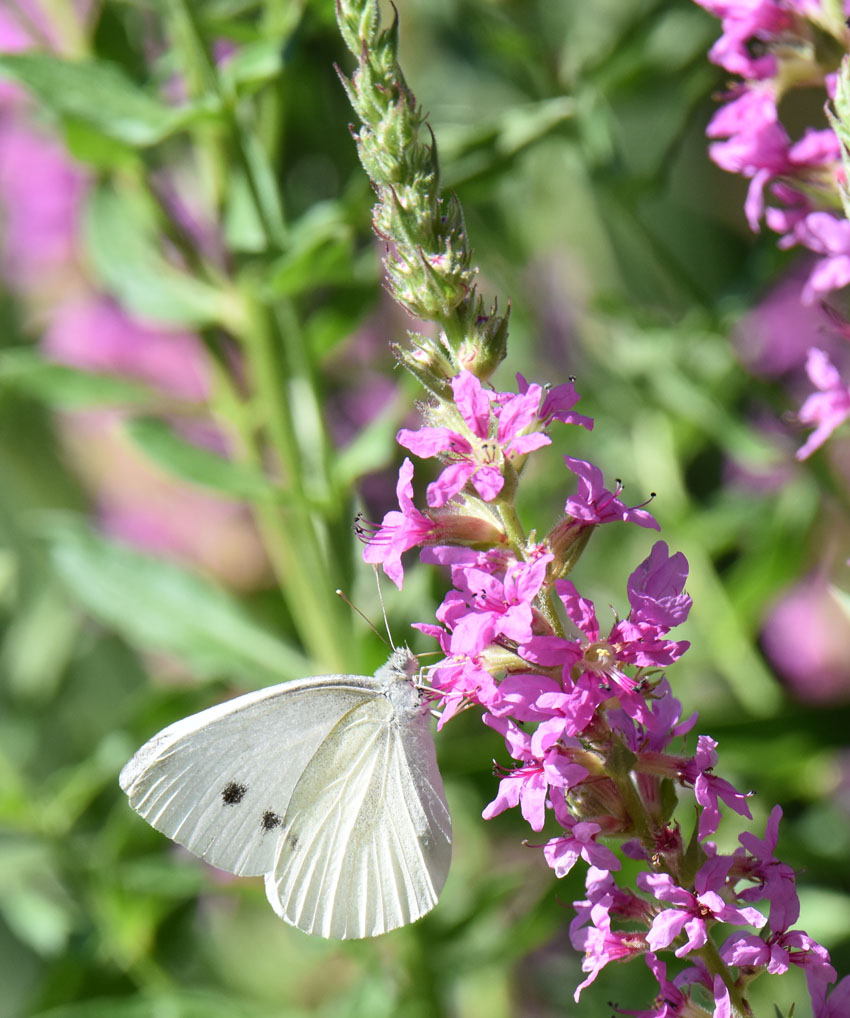
A Cabbage White enjoys a sip of sweetness.
I had slowed down well before approaching the water’s edge because I wanted to count how many Green Frogs were out and about. I also saw some butterflies enjoying the ‘invasive alien’ Purple Loosestrife and I was trying to get a photo of each for my collection of “creatures that actually like Purple Loosestrife” set. A slight movement to my left through the tall grasses, rushes, reeds and cattails caught my eye.
At first I thought I was seeing a half-grown mallard watching me. Then it moved and the neck arched out far longer than any ducks. A crest flickered up and down, then the bird stepped cautiously further away along the bank. This young Green Heron was one of the more common shy ones and it wasn’t sure what I was. In some places where Green Herons see people fairly steadily they can be bolder and more easily approached.
Watching a Juvenile Green Heron Hunt Is Entertaining
I had seen a report on eBird that there was a family of Green Herons in the area so although pleased I wasn’t overly surprised to see this one.
I watched as this juvenile stepped hesitantly this way and that. It flashed up its crest, then ruffled it slowly down. It actually bobbed its tail end a couple of times not unlike a Spotted Sandpiper. The little heron couldn’t seem to decide whether to stay on the one side of the inlet or cross a metre to the far side.
Considering I could see six Green Frogs ranging in size from a half-a-thumb to an over-sized golf ball, I was a bit surprised that it was having trouble finding a snack. There were many minnows in the inlet, too, mostly very small ones.
I checked my bird guides at home and found Green Herons do eat frogs and minnows and many other water’s-edge creatures.
It may not have been very hungry or it may not have been much good at hunting for itself. It spent most of its time standing on various rocks stretching and shrinking its neck and looking nervous. Unfortunately, it chose rocks where my view and aim was obscured with vegetation.
Why Is This Brown-Blue-Grey and Rust Bird Called a Green Heron?
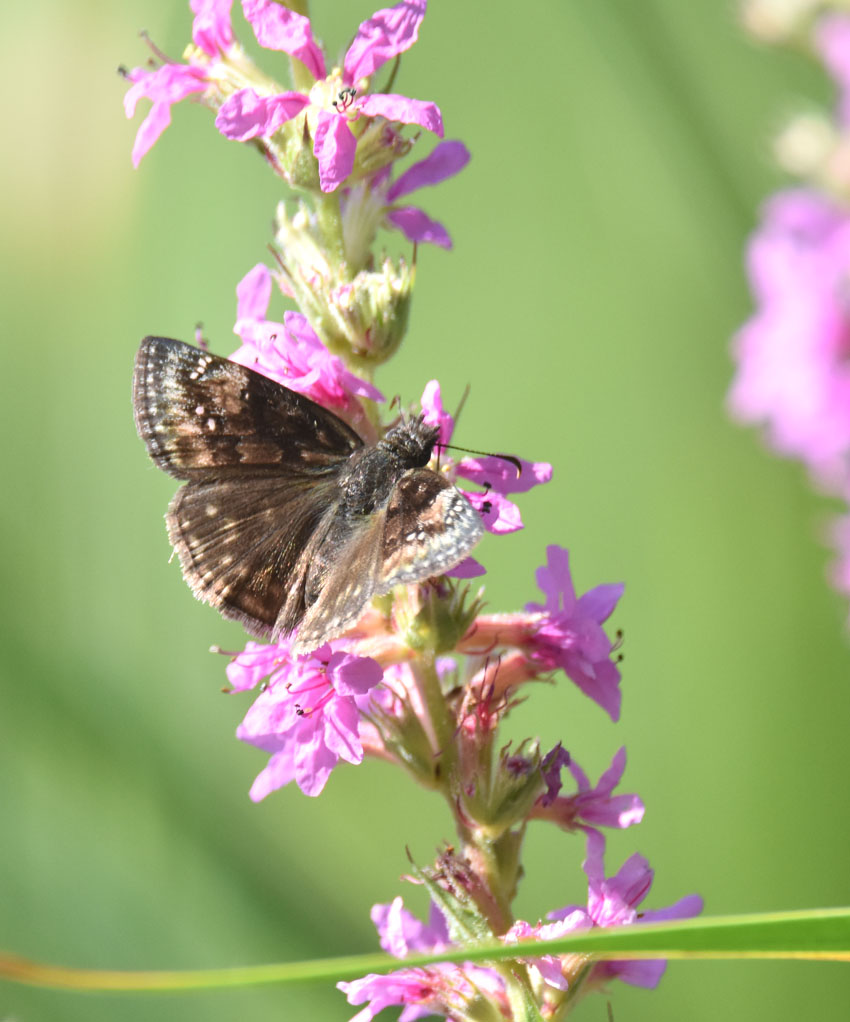
A skipper, probably a Wild Indigo Duskywing
I was staying still taking photos of the frogs and butterflies, the alien Flowering Rushes and the native Cattails, so it wasn’t worried about me.
After about 10 minutes, it flew out to an island in midstream where several uprooted trees make for a good collection of perches and places to hunt. I hope it had more success out there.
It isn’t obvious from any of my photos why this bird is called a Green Heron. The juveniles aren’t particularly green. Adults, however, have a green tone to their backs. Adults also have a solid rust-coloured chest not streaks.
Are Green Herons Always Difficult to Find?
When I continued my walk, I kept an eye on dead trees in the area for birds. Many types perch to search for food, danger, and rivals. To my surprise, one very tall dead tree had a Green Heron perched on it. I couldn’t tell from the distance if it was the same juvenile I had seen earlier or not. If it hadn’t been so hot, I might have walked closer to find out but it was time to find some shade and some iced water, so I left it in peace.
Related Reading
- What’s this Black, Grey and White Heron Perched in a Tree?
- A Great White Egret Stalks Through the Rattray Marsh
- Herons and Egrets Oh My
Join In
Do you have Green Herons nesting near you? Please share your sighting with a comment.

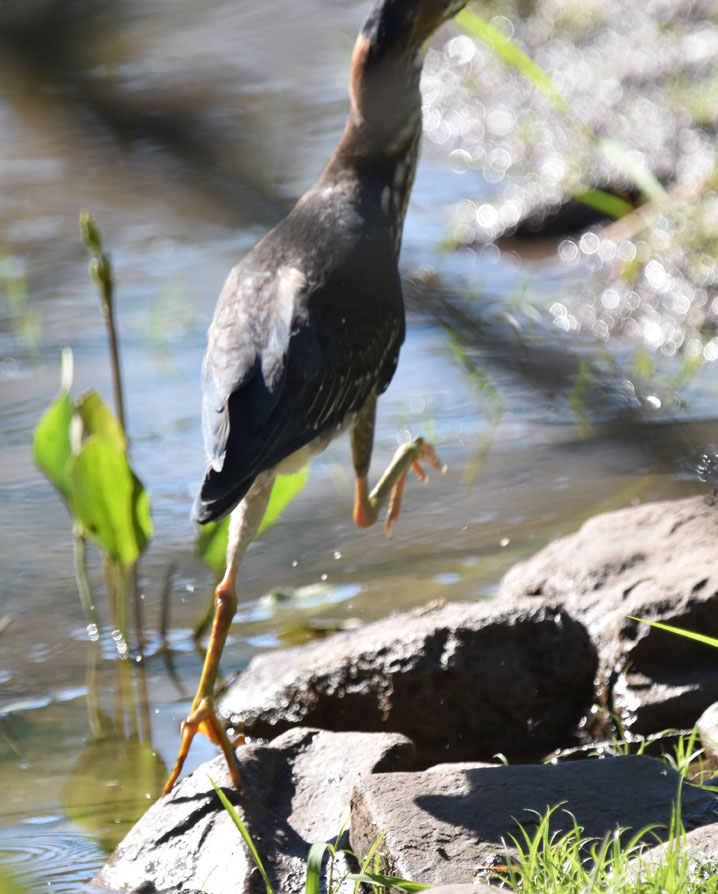
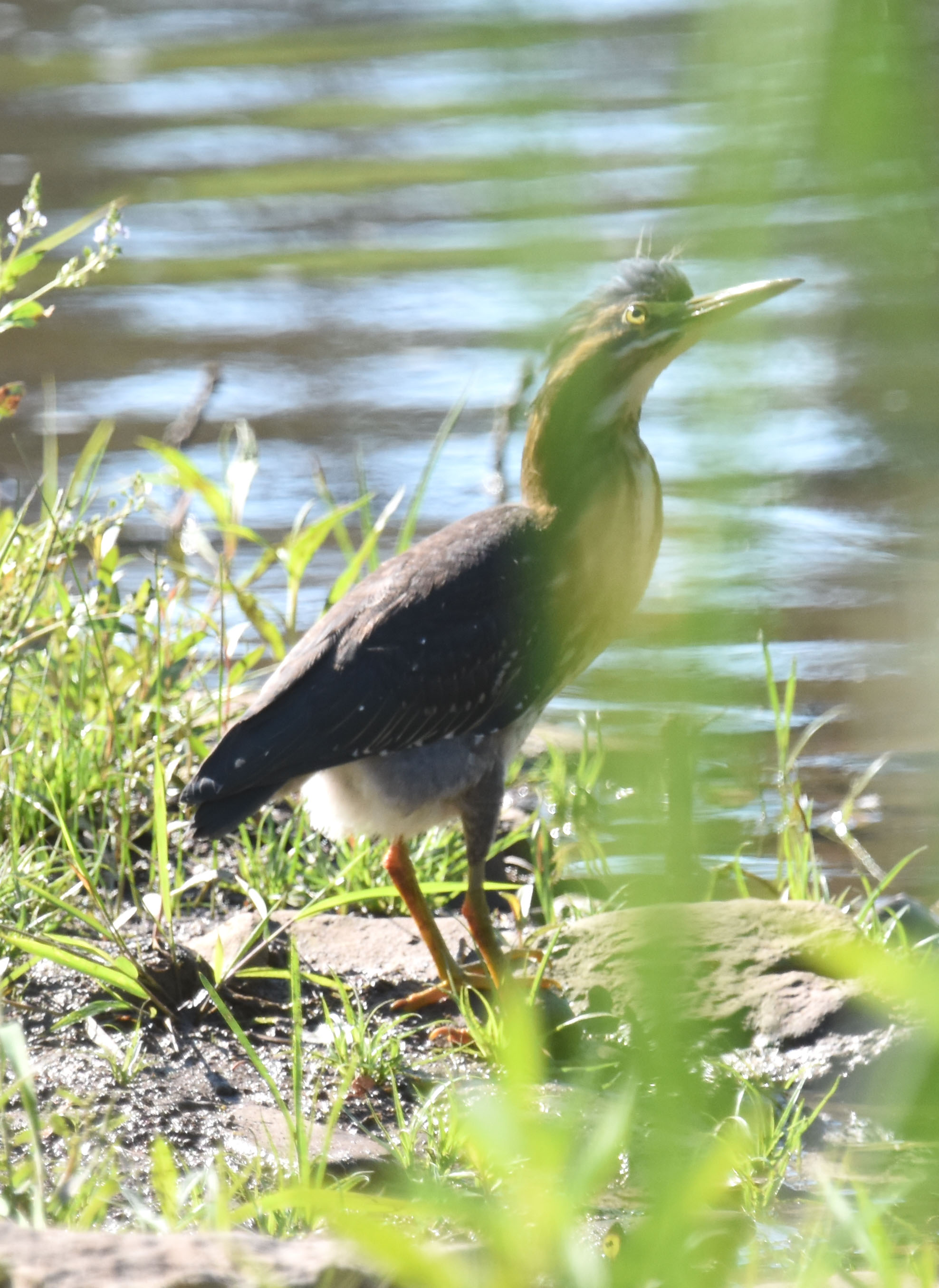
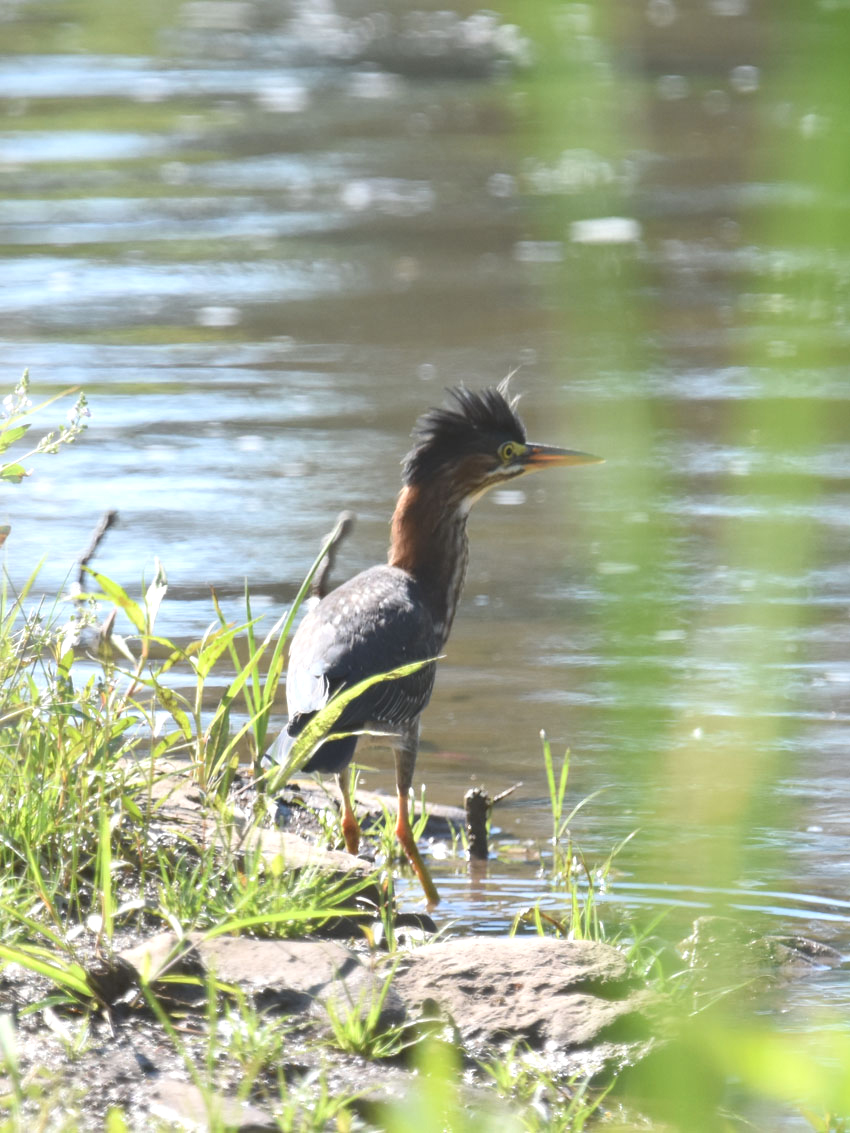
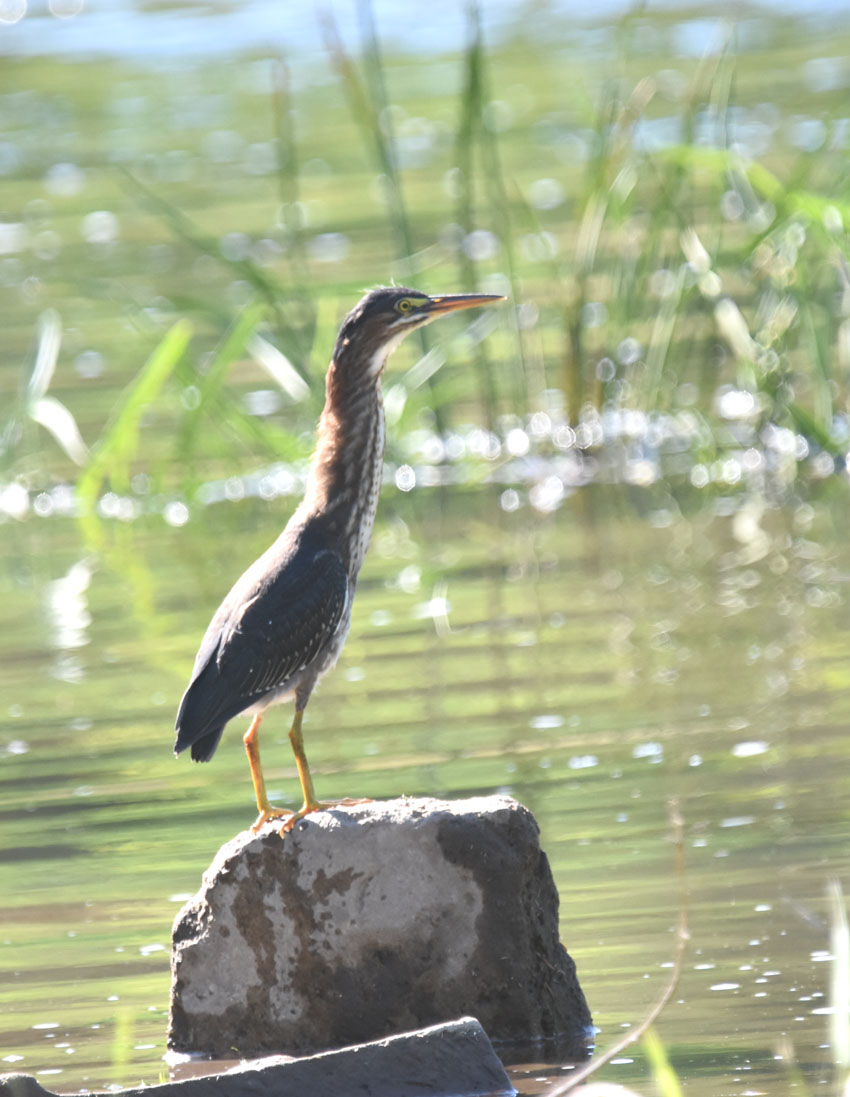
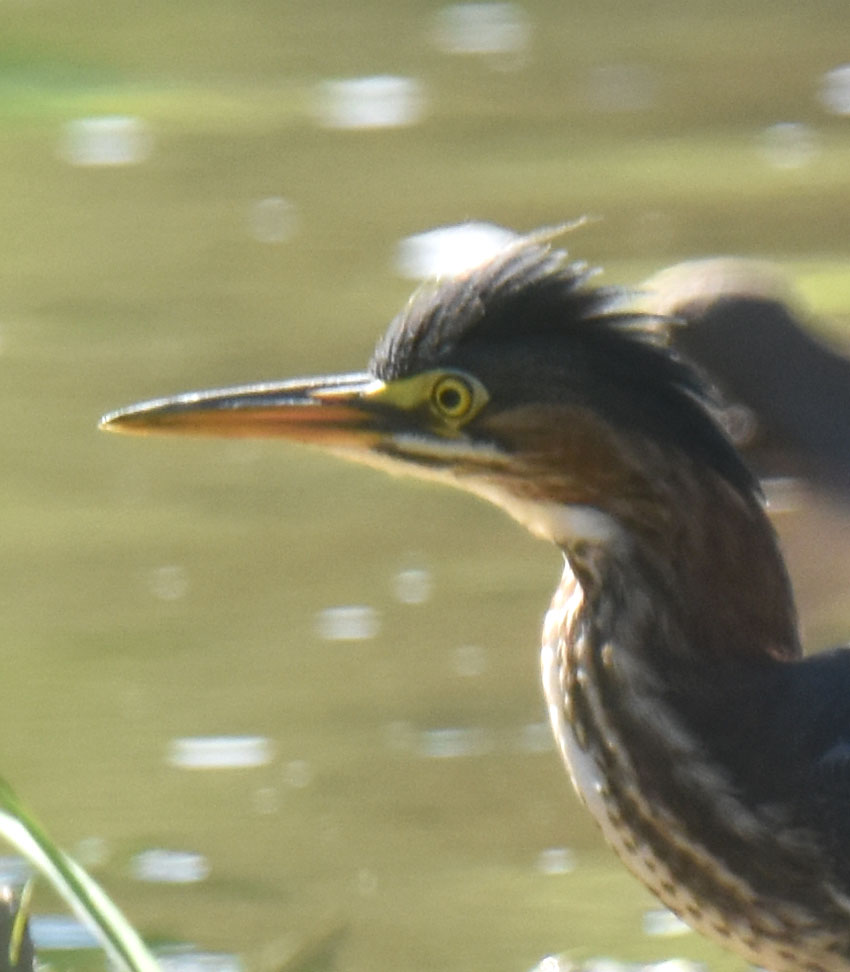
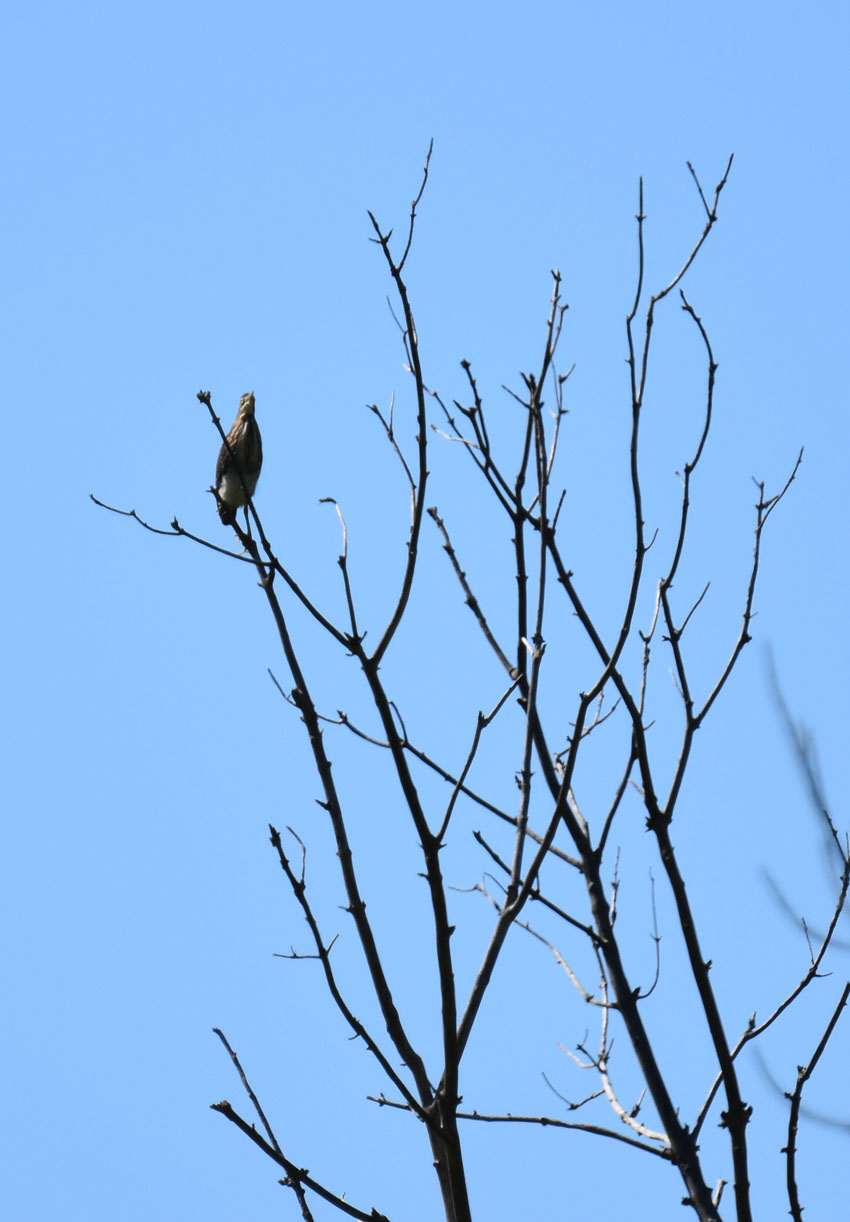
3 Green Heron nests at Reeces Corner, 3 or 4 babies in each nest.
That sounds like a marvellous sight!